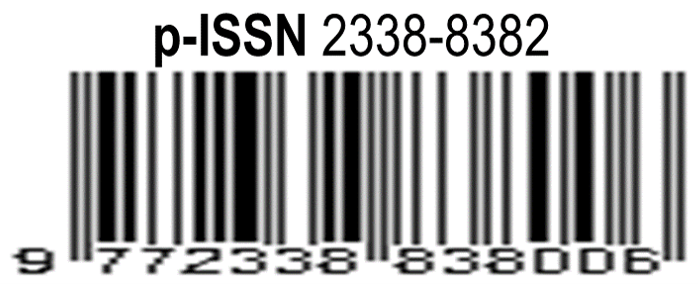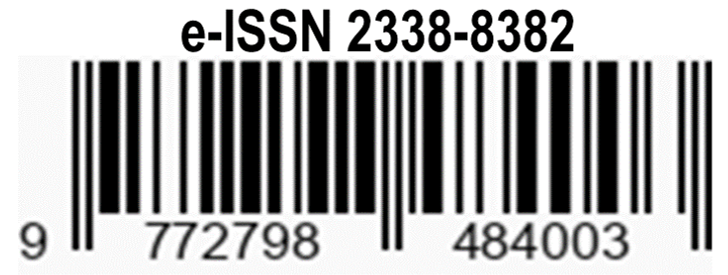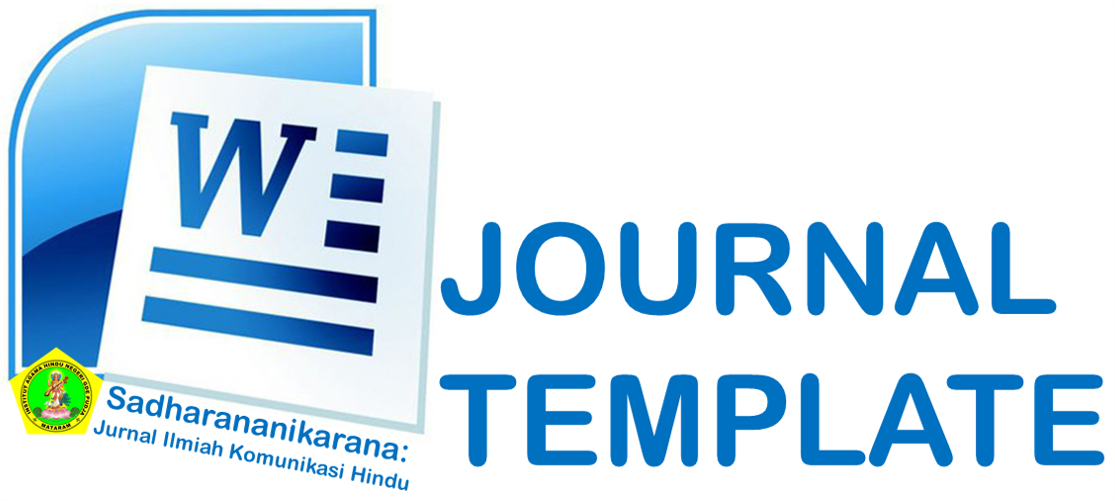Komunikasi Ritual Upacara Otonan Umat Hindu Di Kelurahan Seksari Kecamatan Cakra Utara
Abstract
The development of the times makes the mindset of humans also develop in accordance with existing developments. In implementing religious teachings, Hindus are always guided by three basic frameworks of Hinduism, namely: (1) Sraddha (belief); 2) Susila (religious ethics); and (3) Religious Events (yadnya ceremonies). These three basic frameworks are always related to one another. The process carried out at the otonan ceremony is as follows: 1) facilities needed include; leaves, fruits, snacks, nuts (bija-bija), rice, sticky rice, chicken, duck, pork, eggs, coconut, pane, mortar (lumping), chicken cage, etc., 2) Upakara levels, namely Nista, Madya and Utama, 3) The time of implementation, among others, there are those who carry out at the age of 210 days, there are those who carry out at the age of 610 days or more, and there are those who carry out sustainable autonomy. 4) The procedures include; Sulinggih uploads mapuja, Ngaturang pengastawa to Surya, Nyirat bebanten, ngaturang kerik shampoo, ngaturang rayunan, Mesolasan to Sor, joint worship, descends to the ground followed by a round of mortar and magogo-gogoan, hair cutting, Majaya-jaya, Natab Semayut, Nunas Tirtha wangsuhpada, Owing to Handling, Megat Bebalik, and finally throwing hair to Segara/Sea, 5) The leader of the ceremony Price where they are masurya, or people who are elder in the output for sustainable otonan and the Islamic Mangku Kemalik for the Megat Bebalik ceremony, 6) The type of offer consists of; daksina, squeeze, jerimpen, kurenan, conjurer, pengambean, penyegjeg, pagah tuuh, pajegan, tissues, greetings, and bajang.
References
Koentjaraningrat. 2007. Sejarah Teori Antropologi I. Jakarta : Universitas Indonesia
Moleong, Lexy.J. 2001. Metodologi Penelitian Kualitatif , Bandung : PT. Remaja Rosdakarya.
Pudja, G. 2004. Bhagawadgita. Surabaya : Paramita.
Santi Patni. R, Gusti Ayu (2004). Skripsi ”Tatacara Pelaksanaan Upacara Otonan Di Kecamatan Cakranegara”. Mataram: Sekolah Tinggi Agama Hindu Negeri Gde Pudja
Sudarsana, I. B. Putu. 2008. Ajaran Agama Hindu Makna Upacara Pawetonan. Denpasar : Yayasan Dharma Acarya.
Sugiyono. 2007. Metode Penelitian Kuantitatif Kualitatif dan R&D. Bandung : Alfabeta.
Tim, 1997. Ensiklopedi Nasional Indonesia. Jakarta: PT Delta Pamungkas.
Tim, 2005. Kamus Istilah Agama Hindu. Denpasar; Kanwil Departemen Agama Propinsi Bali.Tt : tp
Tim.1985. Majelis Pembina Lembaga Adat Propinsi Daerah Tingkat I Bali Manusa Yadnya
Titib, I Made. 2003. Teologi Dan Simbol-simbol dalam Agama Hindu. Surabaya: Paramita.
Wiana, I Ketut. 2001. Makna Upacara Yajna Dalam Agama Hindu. Surabaya: Paramita.





.png)


.png)






